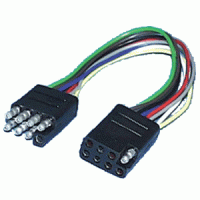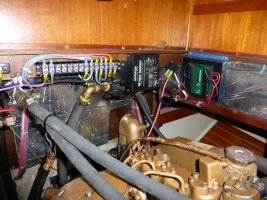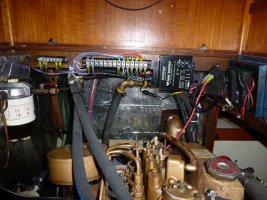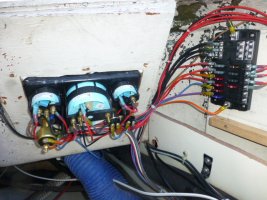Bolo
Contributing Partner
Our E-32 III has a M-25XP on board and I recently had to have the transmission rebuilt. That's another story I'll post here after getting the bill from the yard. (It wasn't a happy experience.) After the work was done I went onboard to check the work and take the boat out for a spin. But as soon as I started the engine I noticed that all the instruments on the panel were dead. The engine and even the blower worked fine but the tach, water temp and battery charge were not working. I was also winterizing the boat and went on to that work before going back to my hotel. (we live about an hour and forty minutes from the marina.) That night I remembered that I had a similar problem with the wiring harness connector at the engine long ago. Sure enough, the next morning I started the engine and had the first mate look at the instruments while I "played" with the connector and they came to life.
Now I did pull it apart and put it back together a few times but it seemed that when I moved the wires around and the connection joint the instruments would sometimes die. This is what probably happened when the technicians worked on the transmission. So...I'm think that the pins in the connector could be pitted (and they did look sort of like that a bit) and/or the connector itself is failing. It's looks like an old design, sort of rubbery beige. So, I was thinking that I should consider replacing this connector with a new one but I also noticed that the wires seem to be molded into the body of the connector. Has anyone every replaced this part and if so then where did you get the replacement? I'd imagine that I would need to take careful notes as to what wire connects with what other wire before I cut anything and re-wire through a new connector.
Now I did pull it apart and put it back together a few times but it seemed that when I moved the wires around and the connection joint the instruments would sometimes die. This is what probably happened when the technicians worked on the transmission. So...I'm think that the pins in the connector could be pitted (and they did look sort of like that a bit) and/or the connector itself is failing. It's looks like an old design, sort of rubbery beige. So, I was thinking that I should consider replacing this connector with a new one but I also noticed that the wires seem to be molded into the body of the connector. Has anyone every replaced this part and if so then where did you get the replacement? I'd imagine that I would need to take careful notes as to what wire connects with what other wire before I cut anything and re-wire through a new connector.





